Rugged mountain landscapes are home to some of the most awe-inspiring and powerful birds of prey on the planet. These majestic raptors have evolved to thrive in harsh, high-altitude environments, where their strength, agility, and keen hunting skills are put to the test. From the towering peaks of the Andes to the remote ranges of the Himalayas, these birds dominate the skies with their impressive wingspans and commanding presence. In this article, we’ll explore the top 15 most majestic birds of prey that inhabit these challenging terrains, celebrating their beauty, adaptability, and the vital roles they play in the ecosystems they call home.
Golden Eagle
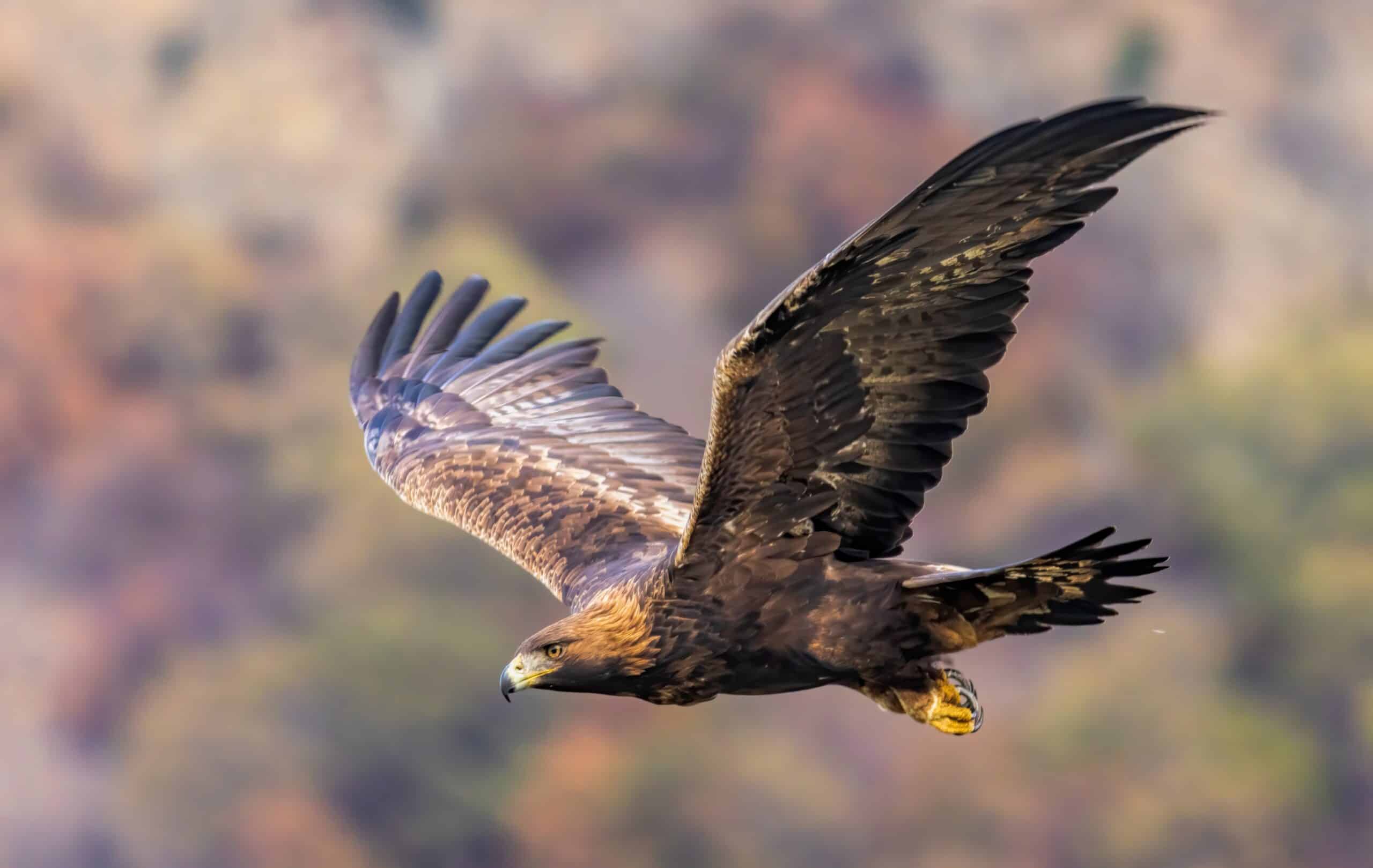
The Golden Eagle is one of the most iconic birds of prey, revered for its strength, agility, and majestic appearance. Found across North America, Europe, and Asia, this bird is a symbol of power in many cultures. It has a wingspan of up to 7.5 feet, which allows it to soar effortlessly over vast mountainous terrains. With its sharp talons and beak, the Golden Eagle is a formidable hunter, preying on mammals like rabbits, ground squirrels, and even larger animals such as deer fawns. Its keen eyesight can detect prey from miles away, making it an apex predator in its habitat. The Golden Eagle’s regal, golden-brown plumage and commanding presence make it one of the most majestic and admired raptors in the world, especially in the rugged, high-altitude environments it often calls home.
Andean Condor
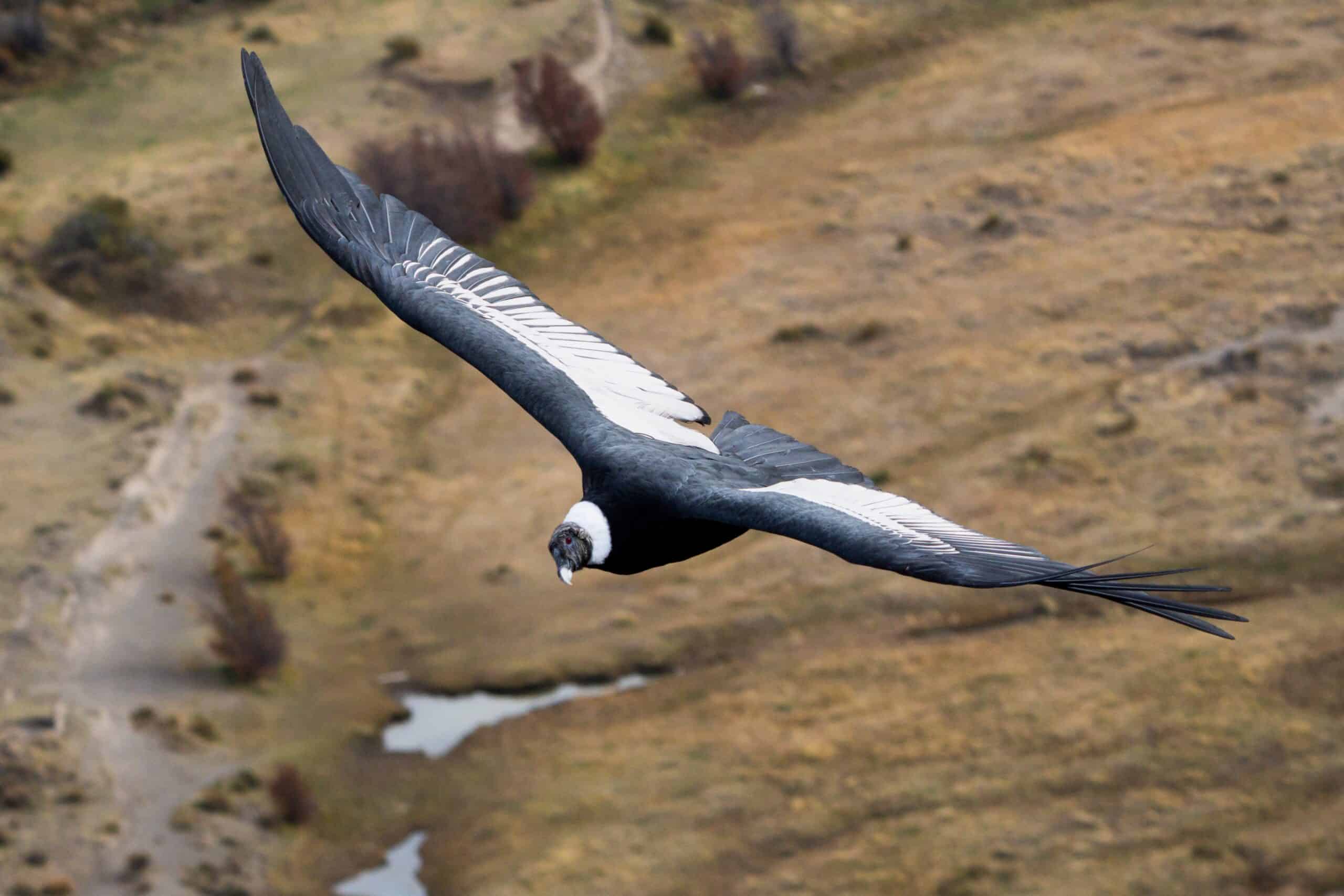
The Andean Condor, the largest flying bird in the world, is a symbol of grandeur and power in South American cultures. With a wingspan that can reach up to 10.5 feet, this bird effortlessly glides over the peaks of the Andes Mountains, using thermal air currents to stay aloft for hours with minimal energy. Its black and white plumage, combined with its imposing size, creates a striking image against the backdrop of the rugged mountain landscapes. The Andean Condor is a scavenger, feeding primarily on carrion, which it spots from high altitudes. Despite its somewhat gruesome diet, the condor plays a vital role in the ecosystem by cleaning up dead animals. Its longevity, often living up to 70 years in the wild, adds to its mystique and status as a majestic bird of prey in the challenging environments of the Andes.
Bearded Vulture (Lammergeier)
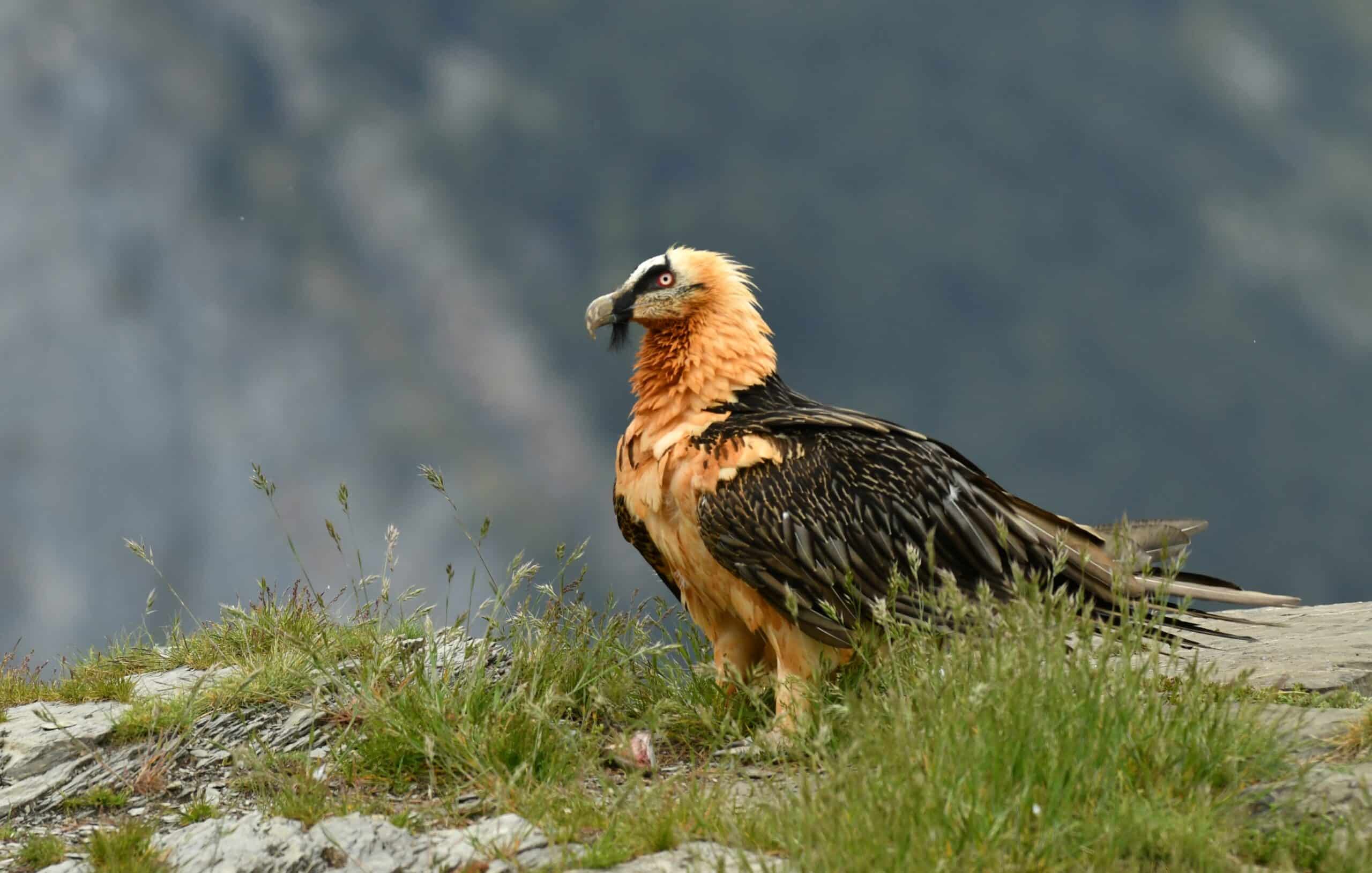
The Bearded Vulture, also known as the Lammergeier, is one of the most distinctive and awe-inspiring birds of prey that inhabit mountainous regions in Europe, Africa, and Asia. This vulture is easily recognizable by its orange-tinged plumage and the dark beard-like feathers under its chin, which give it a fierce and majestic appearance. With a wingspan of up to 9 feet, the Bearded Vulture is a master of the skies, gliding effortlessly over rugged terrains and steep cliffs. What makes this bird particularly unique is its diet: it feeds primarily on bones, which it drops from great heights onto rocks to crack them open and access the marrow inside. This remarkable feeding strategy, combined with its ability to thrive in harsh, high-altitude environments, makes the Bearded Vulture one of the most majestic and fascinating birds of prey in the world.
Himalayan Vulture
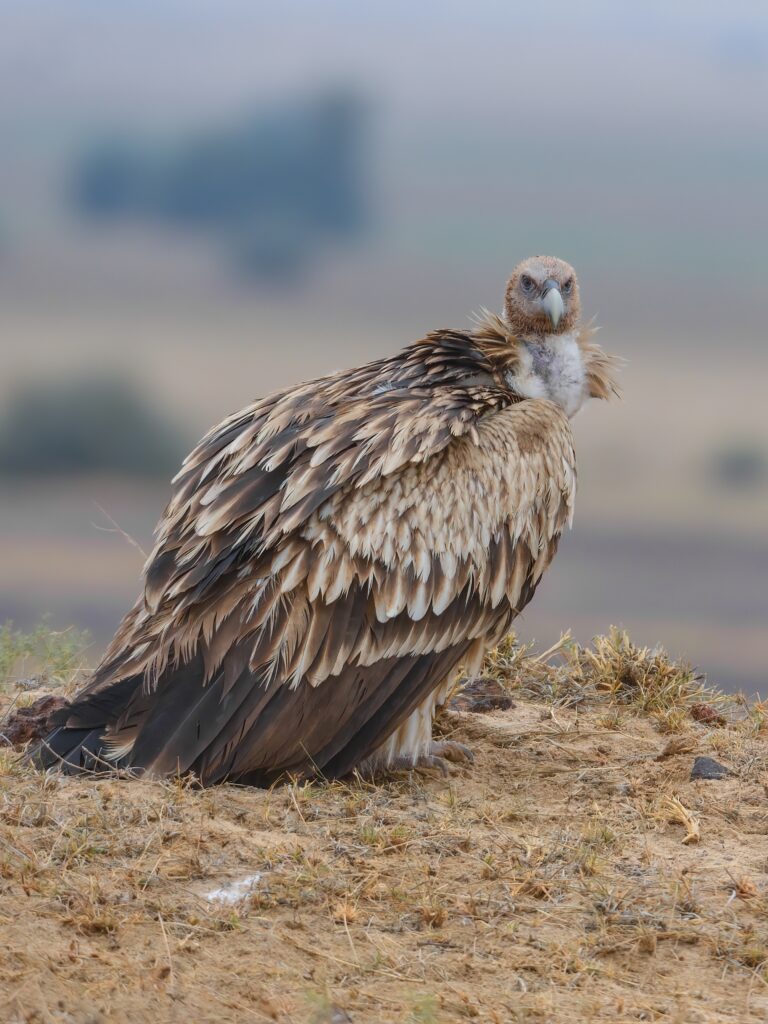
The Himalayan Vulture, one of the largest and most powerful birds of prey, is perfectly adapted to life in the high altitudes of the Himalayas. With a wingspan that can reach up to 10 feet, this vulture soars gracefully over the world’s tallest peaks, including Mount Everest. Its thick, pale brown plumage provides insulation against the freezing temperatures, while its large, powerful beak is ideal for tearing into the tough hides of carrion. The Himalayan Vulture’s size and strength are matched by its endurance; it can cover vast distances in search of food, often at altitudes where oxygen levels are dangerously low for most other animals. This vulture’s ability to thrive in such a challenging environment, combined with its imposing presence and crucial role in the ecosystem as a scavenger, makes it one of the most majestic birds of prey in the rugged mountain landscapes of Asia.
Harpy Eagle
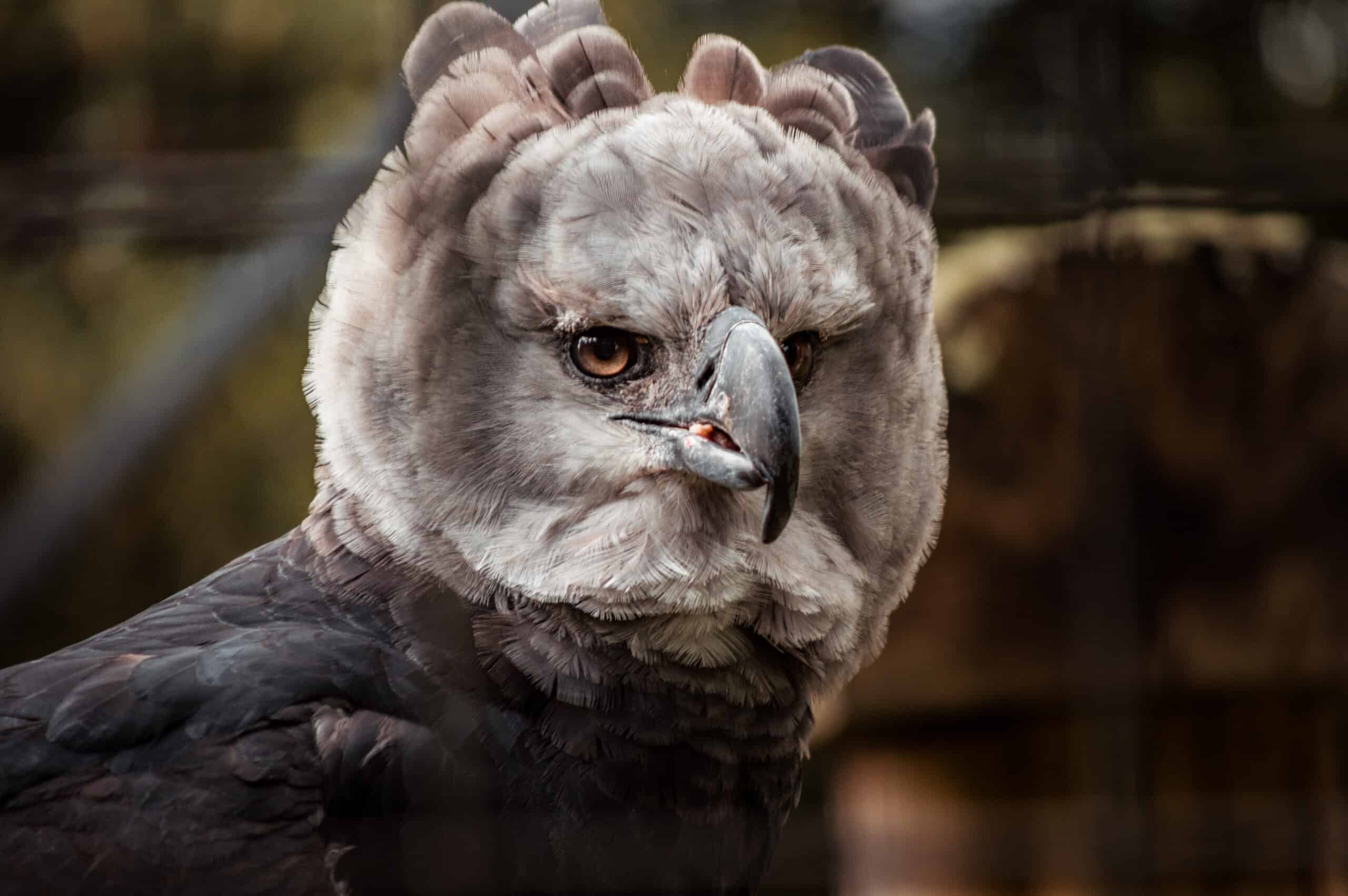
The Harpy Eagle, one of the most powerful and formidable birds of prey, is primarily found in the dense rainforests of Central and South America, but it also inhabits mountainous regions within these areas. With a wingspan of up to 7.5 feet and talons as large as a grizzly bear’s claws, the Harpy Eagle is a top predator, capable of hunting large mammals such as monkeys and sloths. Its striking black and white plumage, combined with its imposing size and distinctive crest of feathers on its head, make the Harpy Eagle one of the most visually impressive birds of prey. The Harpy Eagle’s hunting prowess is unmatched; it can snatch prey from the trees with incredible precision and strength. This eagle’s ability to dominate its environment, coupled with its powerful and majestic appearance, makes it one of the most awe-inspiring birds of prey in the world, particularly in the challenging environments it inhabits.
Steller’s Sea Eagle
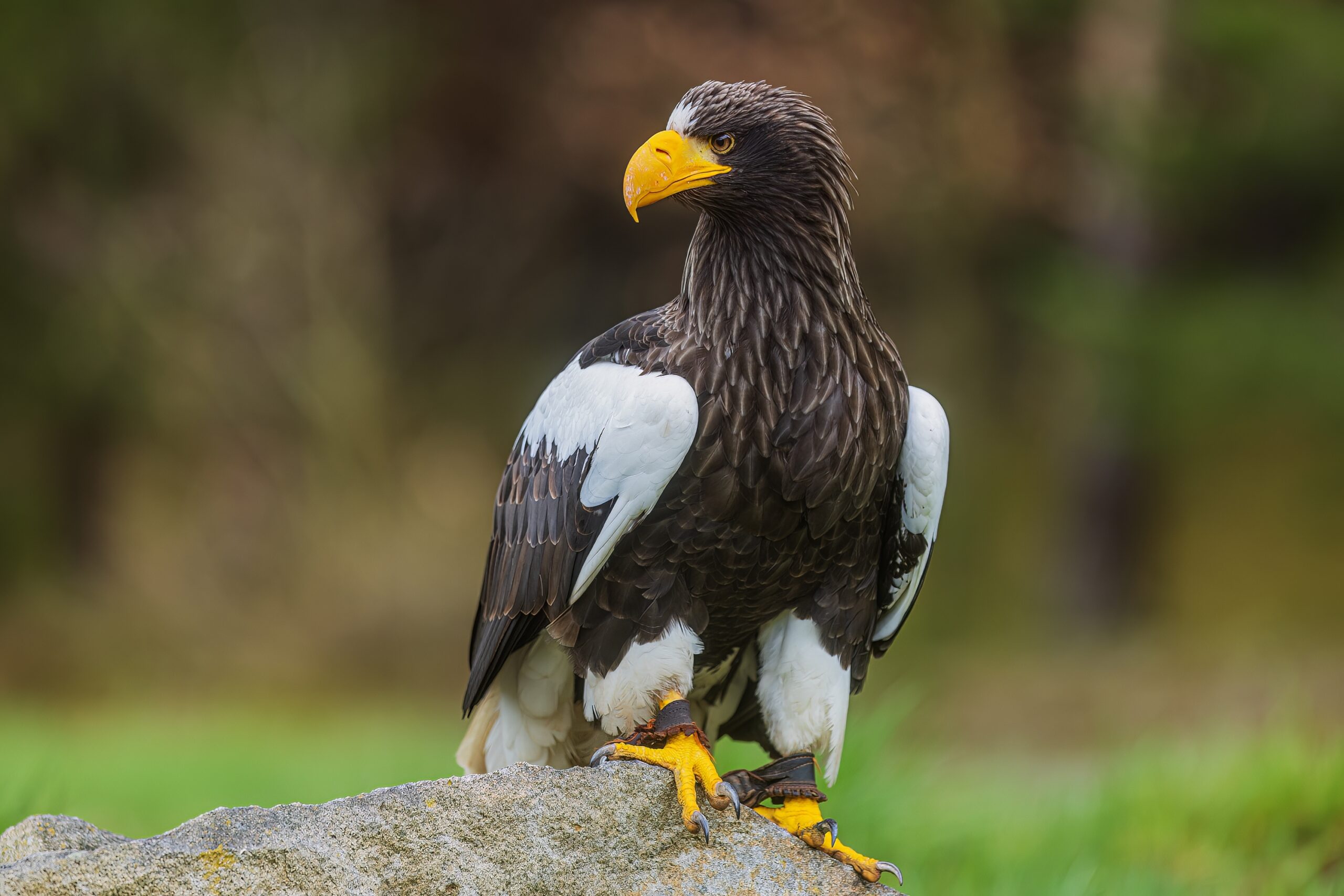
The Steller’s Sea Eagle is one of the largest and most impressive eagles, native to the coastal regions and mountains of northeastern Asia, particularly around the Russian Far East. With a wingspan that can reach up to 8 feet and a weight of up to 20 pounds, it is one of the heaviest eagles in the world. The Steller’s Sea Eagle is easily recognizable by its striking black and white plumage and its massive, bright yellow beak. This eagle is a formidable hunter, feeding primarily on fish and waterfowl, which it catches with its powerful talons. The Steller’s Sea Eagle’s preference for rugged, icy coastal environments and its incredible strength and size make it one of the most majestic and respected birds of prey. Its presence in the wild is a true testament to the raw power and beauty of nature in some of the most remote and challenging landscapes on Earth.
Philippine Eagle
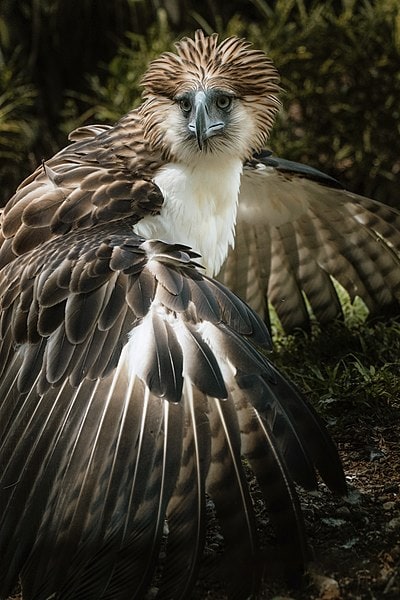
The Philippine Eagle, also known as the “Monkey-Eating Eagle,” is one of the rarest and most endangered eagles in the world. Native to the rainforests of the Philippines, this bird is one of the largest and most powerful eagles, with a wingspan of up to 7 feet. The Philippine Eagle’s distinctive appearance, with its striking crest of feathers and piercing blue eyes, makes it one of the most visually impressive birds of prey. It primarily hunts monkeys, flying lemurs, and other large mammals, showcasing its incredible strength and agility. The Philippine Eagle’s role as an apex predator in its environment and its critical status as an endangered species make it a symbol of both power and conservation efforts. Its ability to thrive in the dense, mountainous forests of the Philippines, combined with its majestic appearance and hunting prowess, solidifies its place as one of the most awe-inspiring birds of prey.
California Condor
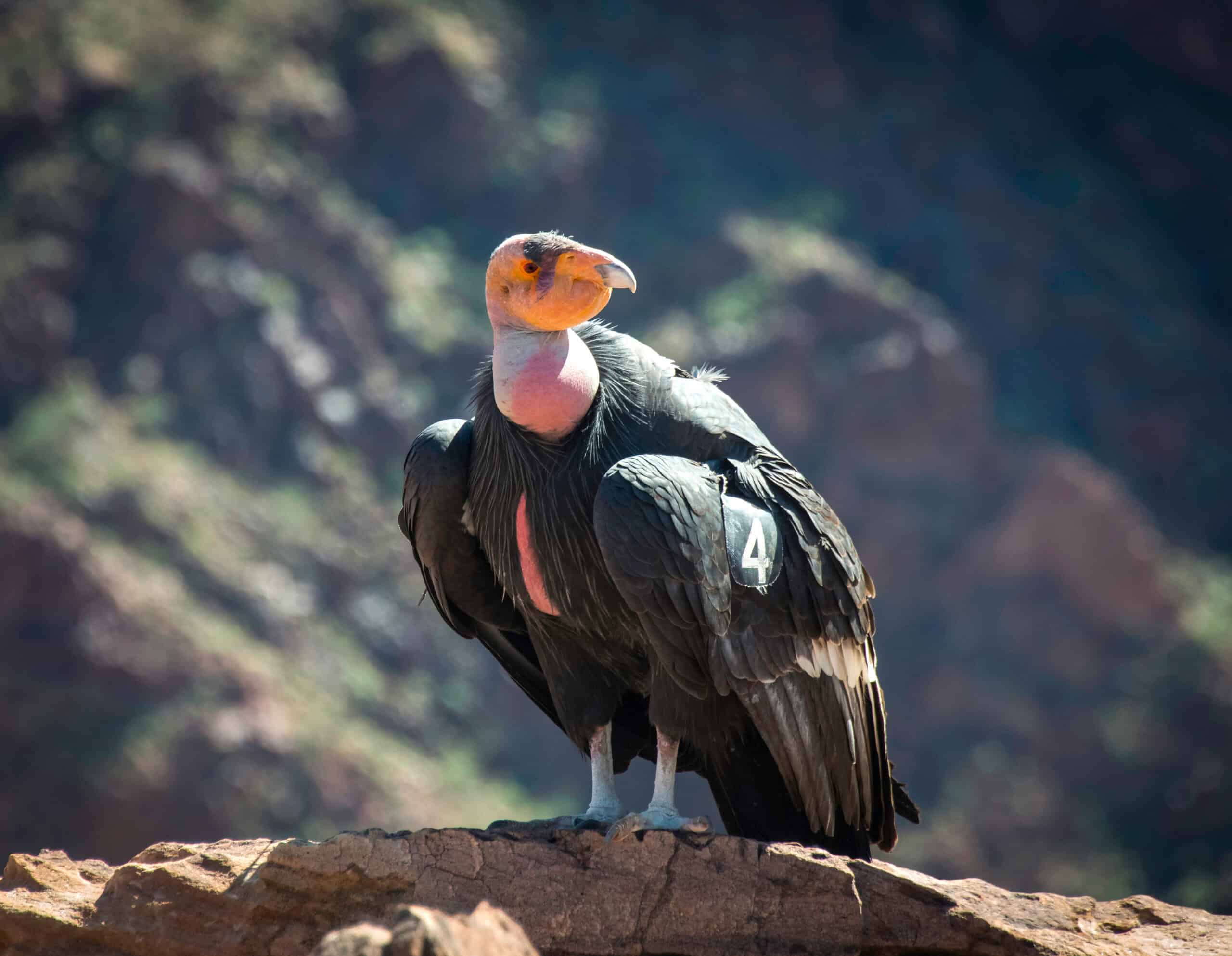
The California Condor is the largest land bird in North America, with a wingspan that can reach up to 9.8 feet. This critically endangered bird of prey primarily inhabits the mountainous regions of California and Arizona, where it soars over rugged terrain in search of carrion. The California Condor’s bald head and large, black body give it a distinctive and somewhat eerie appearance, but its massive wingspan and graceful flight make it one of the most majestic birds of prey in the world. This bird’s role as a scavenger is vital to the ecosystem, as it helps to clean up dead animals and prevent the spread of disease. Despite its current low population numbers, the California Condor’s resilience and ability to survive in some of the harshest environments make it a true symbol of conservation success and a majestic presence in the rugged landscapes it inhabits.
Eurasian Black Vulture
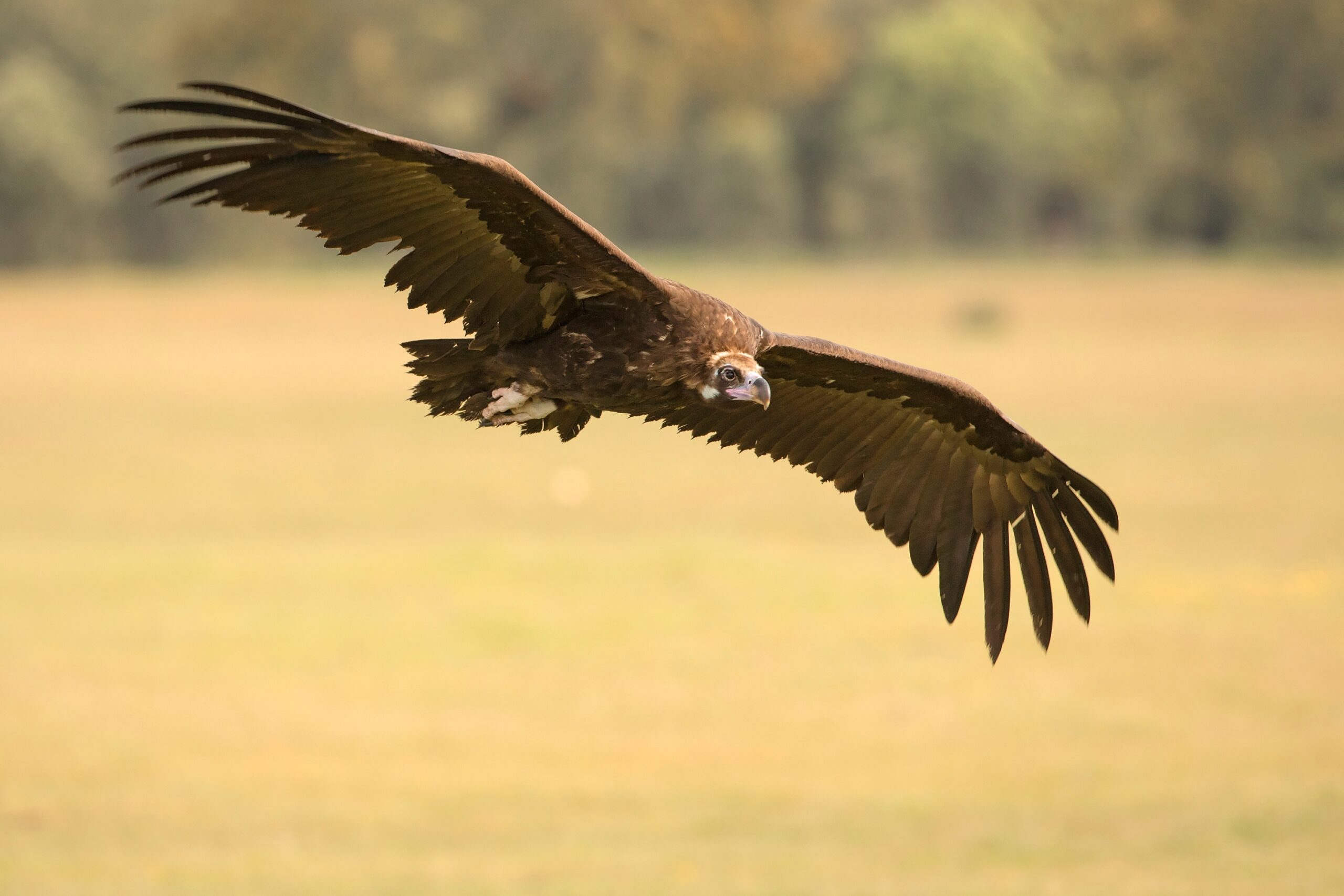
The Eurasian Black Vulture, also known as the Cinereous Vulture, is one of the largest and most powerful birds of prey in the world. Found across Europe and Asia, particularly in mountainous regions, this vulture has a wingspan of up to 10 feet and a weight of up to 31 pounds, making it one of the heaviest raptors. Its dark brown to black plumage and massive size give it a formidable and majestic presence in the wild. The Eurasian Black Vulture is a skilled scavenger, feeding primarily on the carcasses of large mammals. Its strong beak is perfectly adapted to tearing through tough hides and bones. This vulture’s ability to soar effortlessly over rugged mountain landscapes and its crucial role in the ecosystem as a scavenger make it one of the most majestic birds of prey. Its impressive size, power, and adaptability to harsh environments highlight its status as a top avian predator in the wild.
Snowy Owl
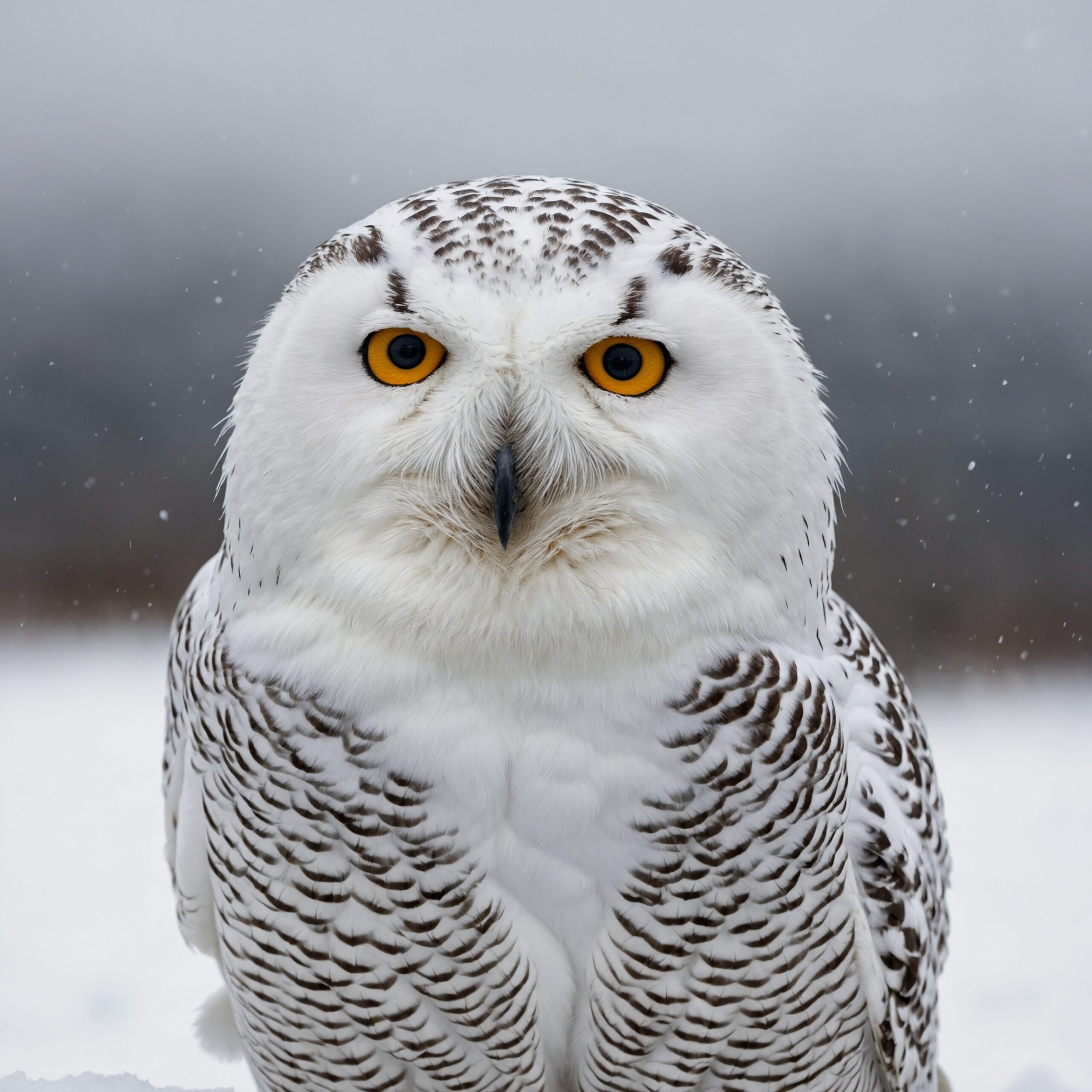
The Snowy Owl, with its striking white plumage and piercing yellow eyes, is one of the most recognizable and majestic birds of prey. Though primarily native to the Arctic tundra, the Snowy Owl can also be found in mountainous regions during migration. This owl’s thick feathers provide excellent insulation against the cold, making it well-adapted to harsh, icy environments. The Snowy Owl is a skilled hunter, feeding on small mammals such as lemmings and other rodents, which it catches with its sharp talons and beak. Its ability to hunt in low light conditions, thanks to its excellent night vision, makes it a formidable predator. The Snowy Owl’s majestic appearance, combined with its adaptability to some of the most extreme environments on Earth, makes it one of the most revered and awe-inspiring birds of prey in the world, particularly in the rugged, snow-covered landscapes it often inhabits.
White-Tailed Eagle
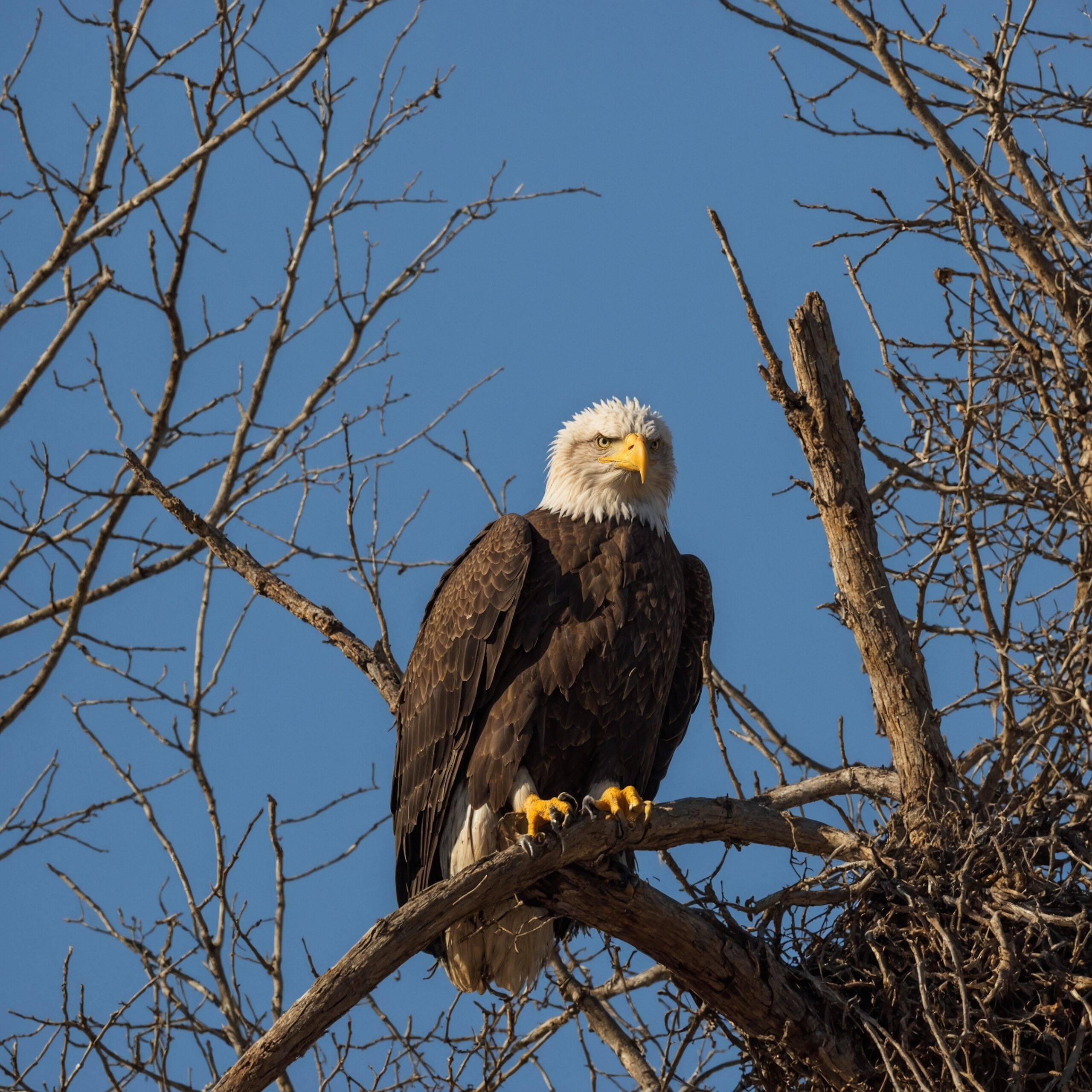
The White-Tailed Eagle is one of Europe’s largest birds of prey, with a wingspan that can exceed 8 feet. Found primarily in coastal and mountainous regions across Europe and Asia, this eagle is known for its distinctive white tail feathers, broad wings, and powerful build. The White-Tailed Eagle is a skilled hunter and scavenger, feeding on fish, birds, and carrion. Its ability to soar high above rugged landscapes in search of food, combined with its striking appearance, makes it one of the most majestic raptors. The White-Tailed Eagle is often seen as a symbol of strength and freedom, and its presence in the wild is a sign of a healthy ecosystem. Despite facing significant threats from habitat loss and hunting in the past, conservation efforts have helped to increase its population, allowing this majestic bird to continue to thrive in its natural mountainous habitats.
Martial Eagle
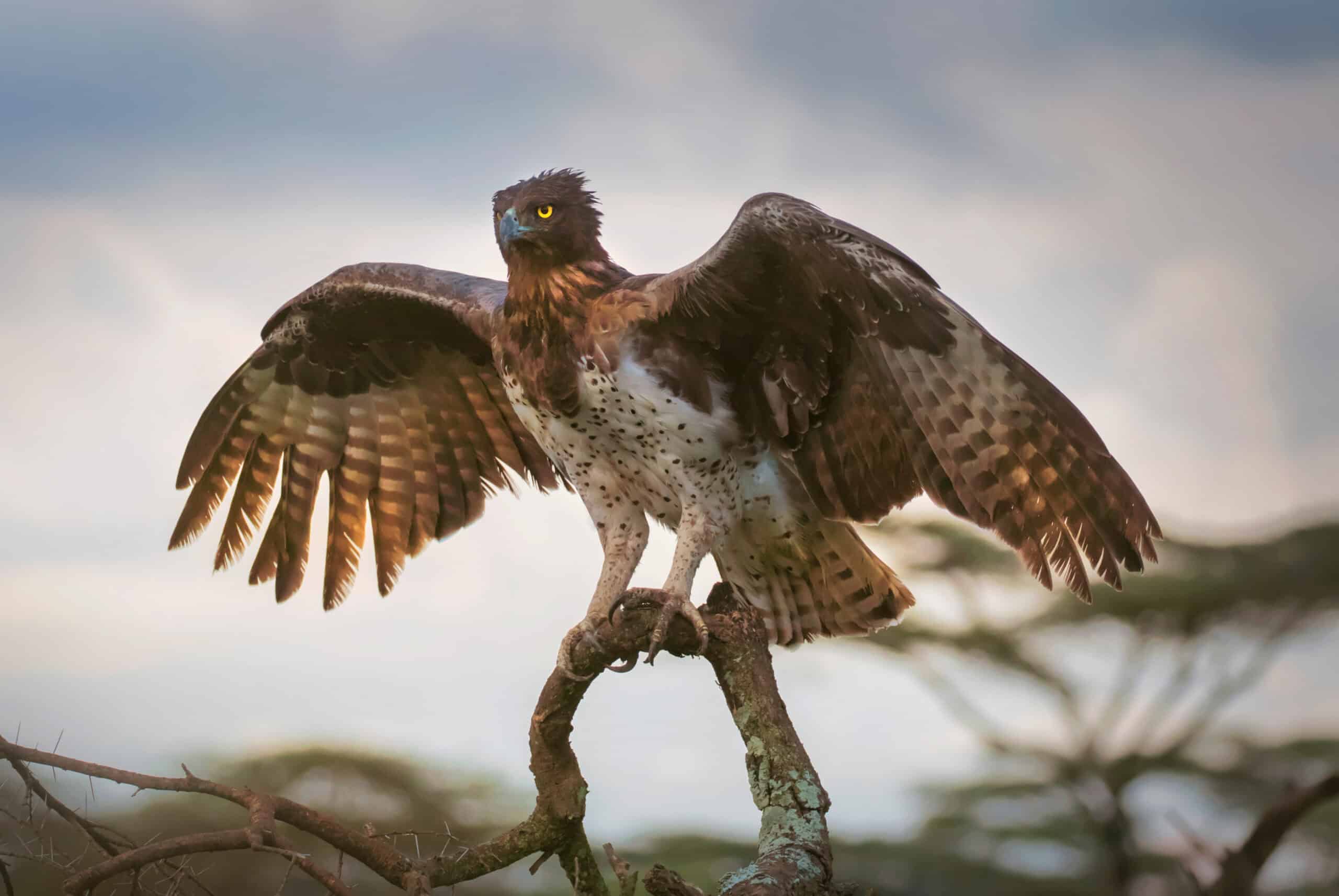
The Martial Eagle is the largest and most powerful eagle in Africa, with a wingspan of up to 8 feet. This formidable bird of prey is known for its incredible strength, capable of hunting animals as large as small antelopes and even young goats. The Martial Eagle’s dark brown and white plumage, along with its piercing yellow eyes, give it a fierce and majestic appearance. Found in the open savannas and mountainous regions of sub-Saharan Africa, the Martial Eagle is an apex predator, playing a crucial role in maintaining the balance of its ecosystem. Its hunting prowess, combined with its impressive size and striking appearance, makes the Martial Eagle one of the most awe-inspiring birds of prey in the world. Despite being a solitary and elusive bird, its presence in the wild is a true testament to the raw power and majesty of nature in Africa’s rugged landscapes.
Lappet-Faced Vulture
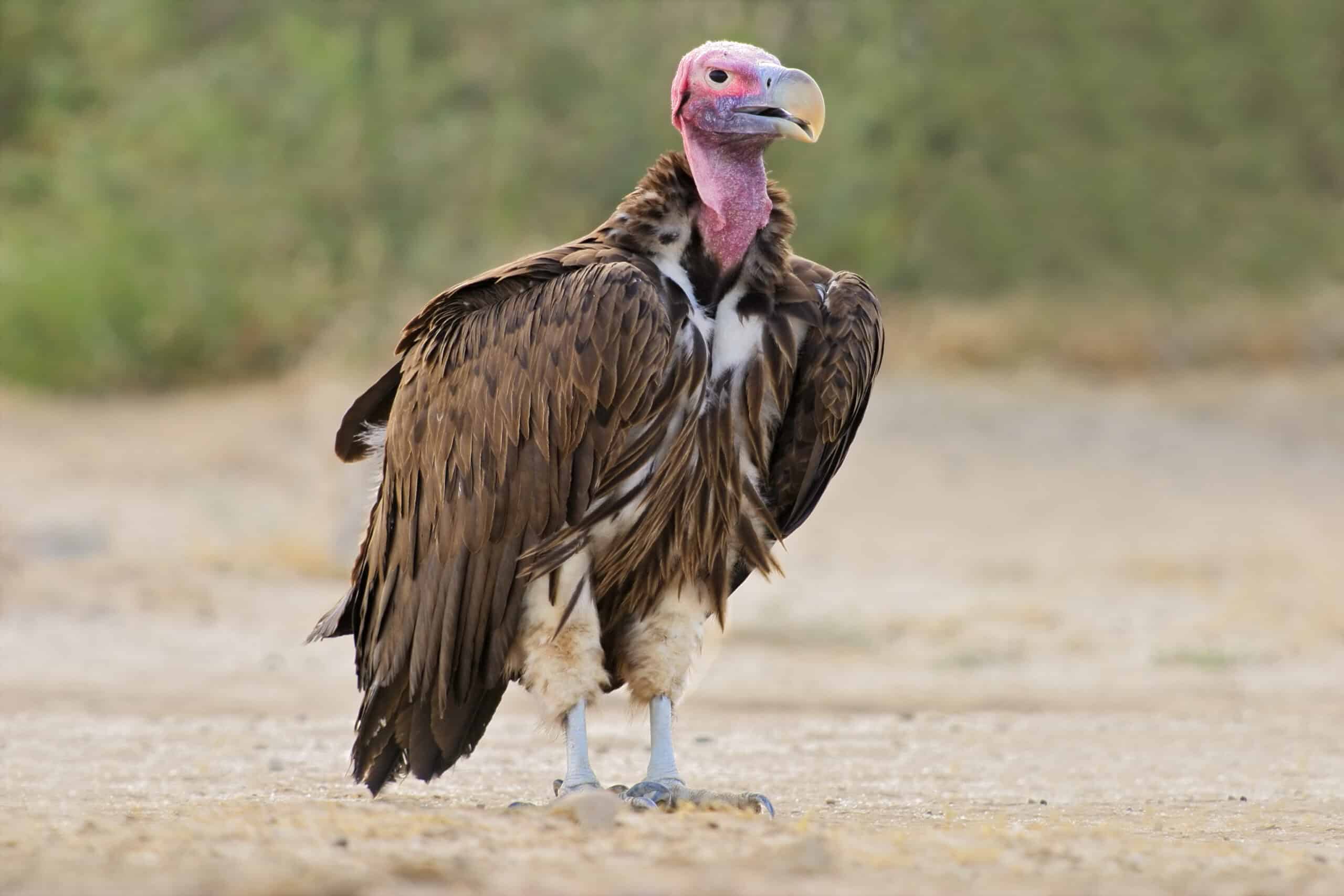
The Lappet-Faced Vulture is one of the largest and most powerful vultures in Africa, known for its distinctive bald head, wrinkled skin, and massive beak. With a wingspan that can reach up to 9.5 feet, this vulture is a dominant scavenger in the savannas and mountainous regions of Africa. The Lappet-Faced Vulture’s powerful beak is capable of tearing through the tough hides of large carcasses, allowing it to access food that other scavengers cannot. Its role as a scavenger is vital to the ecosystem, as it helps to clean up dead animals and prevent the spread of disease. Despite its somewhat fearsome appearance, the Lappet-Faced Vulture is a majestic bird of prey, with its large size and commanding presence making it a symbol of strength and resilience in the harsh environments it inhabits.
Himalayan Monal
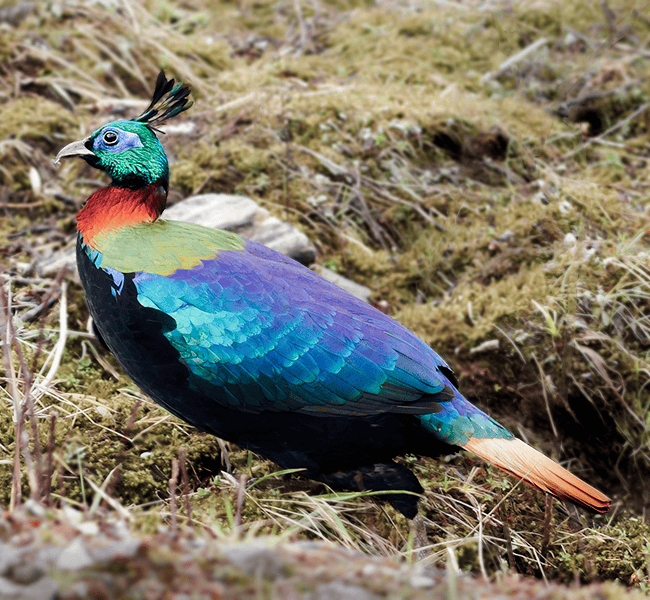
The Himalayan Monal, also known as the Impeyan Pheasant, is a stunning bird found in the mountainous regions of the Himalayas. While not a bird of prey in the traditional sense, its vibrant plumage and majestic presence earn it a place on this list. The males of the species are known for their iridescent feathers that shimmer in hues of blue, green, and gold, making them one of the most visually striking birds in the world. The Himalayan Monal is the national bird of Nepal and is often seen as a symbol of beauty and grace in the rugged mountain landscapes. These birds are well-adapted to life at high altitudes, where they forage for food in the dense undergrowth and along rocky slopes. The Himalayan Monal’s breathtaking appearance and its ability to thrive in the challenging environment of the Himalayas make it a truly majestic bird.
Bald Eagle
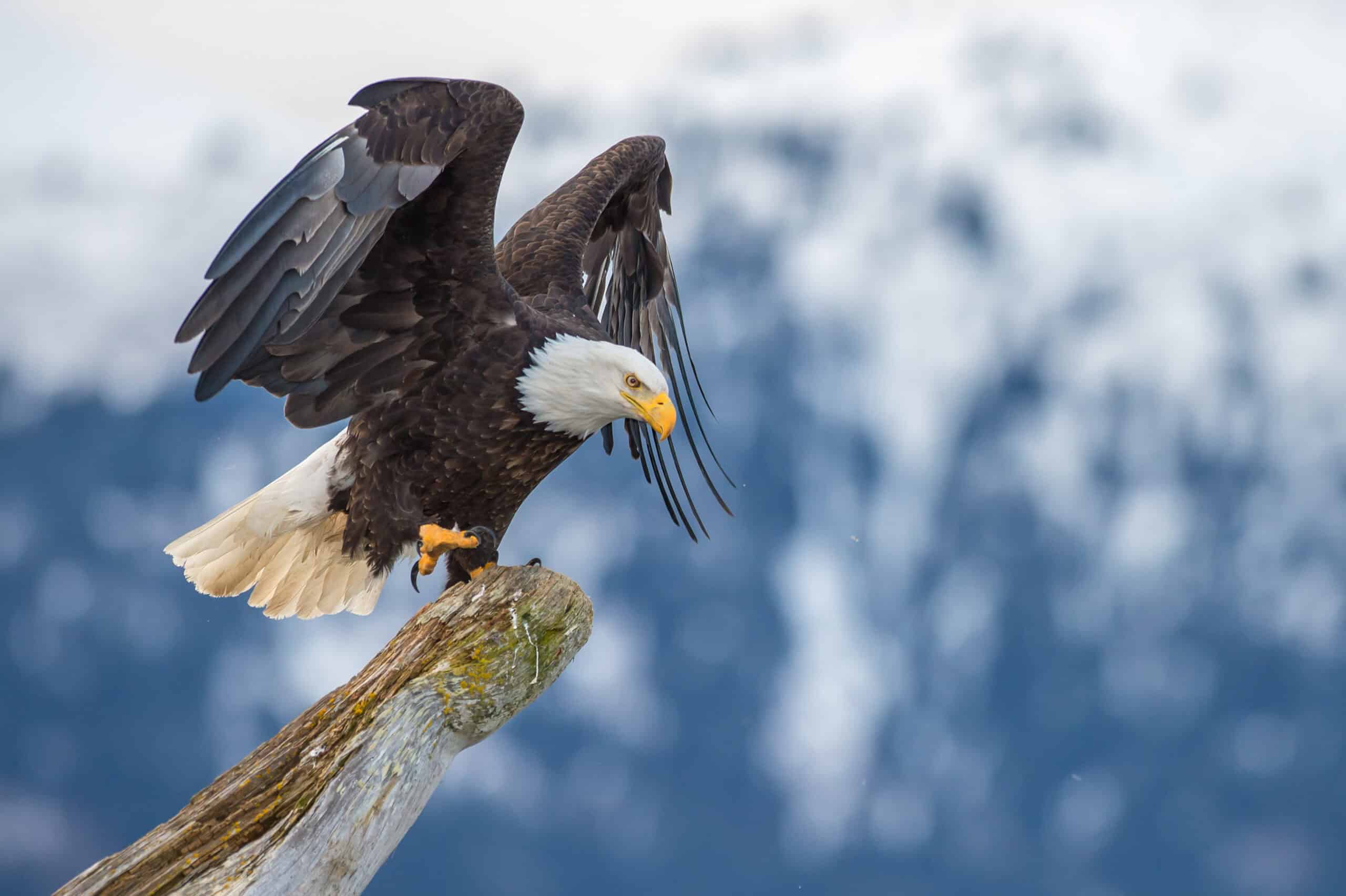
The Bald Eagle, with its striking white head and tail feathers contrasting with its dark brown body, is one of the most recognizable birds of prey in the world. This eagle is the national bird and symbol of the United States, representing strength, freedom, and resilience. Found primarily in North America, the Bald Eagle inhabits a range of environments, including rugged mountainous regions near lakes and rivers. It has a wingspan of up to 8 feet, making it a powerful and agile hunter, particularly adept at catching fish. The Bald Eagle’s sharp talons and beak, combined with its keen eyesight, allow it to efficiently hunt and scavenge in its natural habitat. Despite facing significant threats from habitat loss and hunting in the past, the Bald Eagle has made a remarkable recovery thanks to conservation efforts. Its majestic appearance and symbolic significance make the Bald Eagle one of the most revered birds of prey.
This article originally appeared on Rarest.org.
More from Rarest.org
Poaching has posed a severe threat to countless wildlife species around the globe, driving many to the brink of extinction. Read more.
History often remembers the loudest voices, but many significant thinkers have quietly shaped modern thought. Read more.
Historic chess sets have captivated collectors with their intricate designs and rich stories. Each set carries the essence of the era it was crafted in, making them valuable artifacts. Read more.



